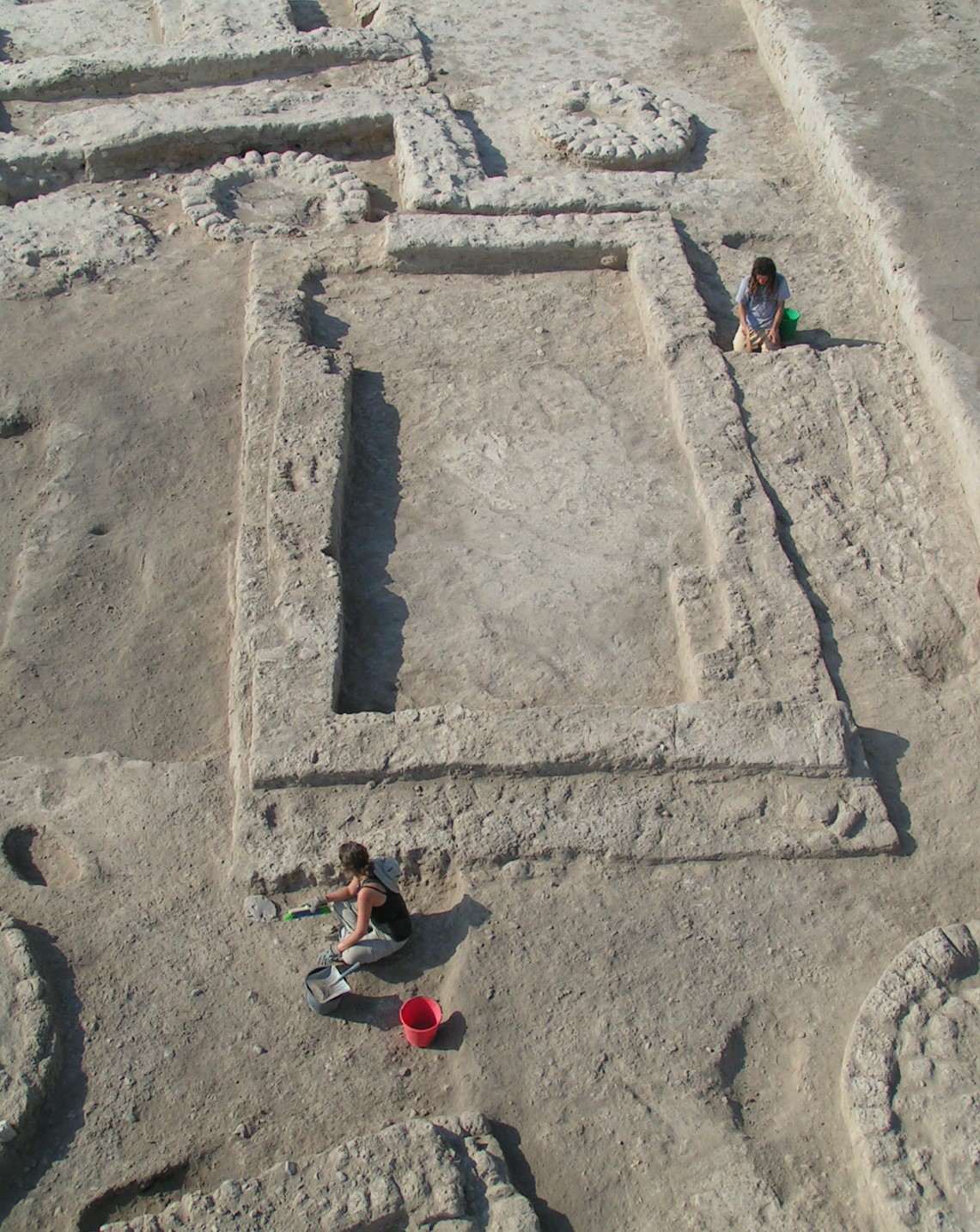The Book of Deuteronomy mentions the Seven Species with which the Land of Israel is blessed – wheat, barley, grapes, figs, pomegranates, olives and dates. Six of the seven species – wheat, barley, grapes, figs, olives and dates – grow wild in Israel, and all seven ripen throughout the year. The order in which they appear in the biblical verse is also the sequence in which they ripen.
The Seven Species constituted the basis of the economy in antiquity and great importance was ascribed to their fruit; they could be eaten fresh, stored and preserved for long periods, dried (figs, dates and grapes) and crushed (olives), and they could also be processed for products such as oil and wine.
But when were they first cultivated by man? A joint study by researchers from Tel Aviv University (TAU) and the Hebrew University (HU) has unraveled the world’s earliest evidence for domestication of a fruit tree. The researchers analyzed remnants of charcoal from the Chalcolithic site of Tel Zaf in the Jordan Valley and determined that they came from olive trees. Since the olive did not grow naturally in the Jordan Valley, it is clear that the inhabitants planted the tree intentionally about 7,000 years ago.

(Photo credit: Prof. Yosef Garfinkel)
The groundbreaking study was led by Dr. Dafna Langgut of TAU’s department of archaeology and ancient Near Eastern cultures and the Steinhardt Museum of Natural History, and the charcoal remnants were found in the archaeological excavation directed by Prof. Yosef Garfinkel of HU’s Institute of Archaeology. The findings were published in the journal Scientific Reports from the publishers of Nature under the title “7,000-year-old evidence of fruit tree cultivation in the Jordan Valley, Israel.”
“I am the head of the laboratory of archaeobotany and ancient environments, which specializes in microscopic identification of plant remains,” said Langgut. “Trees, even when burned down to charcoal, can be identified by their anatomic structure. Wood was the ‘plastic’ of the ancient world. It was used for construction, making tools and furniture and as a source of energy. That’s why identifying tree remnants such as charcoal from hearths found at archaeological sites is a key to understanding what kinds of trees grew in the natural environment at the time and when humans began to cultivate fruit trees.”
Langgut identified the charcoal from Tel Zaf in her lab as belonging to olive and fig trees. ‘Olive trees grow in the wild in the land of Israel, but they do not grow in the Jordan Valley,” she declared. “This means that someone brought them there intentionally – took the knowledge and the plant itself to a place that is outside its natural habitat. In archaeobotany, this is considered indisputable proof of domestication, which means that we have here the earliest evidence of the olive’s domestication anywhere in the world. I also identified many remnants of young fig branches. The fig tree did grow naturally in the Jordan Valley, but its branches had little value as either firewood or raw materials for tools or furniture, so people had no reason to gather large quantities and bring them to the village. Apparently, these fig branches resulted from pruning, a method still used today to increase the yield of fruit trees.”

The tree remnants examined by Langgut were collected by Garfinkel. “Tel Zaf was a large prehistoric village in the middle Jordan Valley south of Beit She’an, inhabited between 7,200 and 6,700 years ago. Large houses with courtyards were discovered at the site, each with several granaries for storing crops. Storage capacities were up to 20 times greater than any single family’s calorie consumption, so clearly these were caches for storing great wealth. The wealth of the village was manifested in the production of elaborate pottery, painted with remarkable skill. In addition, we found articles brought from afar – pottery of the Ubaid culture from Mesopotamia, obsidian from Anatolia, a copper awl from the Caucasus and more.”
The archaeologists were not surprised to discover that the inhabitants of Tel Zaf were the first in the world to intentionally grow olive and fig groves, since growing fruit trees is evidence of luxury, and this site is known to have been exceptionally wealthy.
“The domestication of fruit trees is a process that takes many years, and it therefore befits a society of plenty rather than one that struggles to survive,” continued Langgut. Trees give fruit only three to four years after being planted. Since groves of fruit trees require a substantial initial investment and then live on for a long time, they have great economic and social significance in terms of owning land and bequeathing it to future generations – procedures suggesting the beginnings of a complex society. Moreover, it’s quite possible that the residents of Tel Zaf traded in products derived from the fruit trees such as olives, olive oil and dried figs, which have a long shelf life. Such products may have enabled long-distance trade that led to the accumulation of material wealth, and possibly even taxation – initial steps in turning the locals into a society with a socio-economic hierarchy supported by an administrative system.”
The material culture of the site is remarkably rich compared to contemporary sites in the region – dense concentrations of animal bones indicate large-scale feasts; a unique and elaborate style of pottery decoration consisting of red and black geometric designs on white slip was common; a stone seal and some 140 seal impressions were found; two large concentrations of ostrich eggshell beads were discovered in a courtyard and 1,668 beads in a single grave; some 100 stone beads were made of various green, red, and black minerals; additional imported substances and artifacts included raw greenstone chunks.
At the Tel Zaf archaeological site, the team found the first evidence in the world for the domestication of fruit trees, alongside some of the earliest stamps – suggesting the beginnings of administrative procedures. “As a whole, the findings indicate wealth, and early steps toward the formation of a complex multilevel society, with the class of farmers supplemented by classes of clerks and merchants,” Langgut concluded.
(Though archaeological findings such as these appear to contradict the biblical account of Creation, many Christian and Jewish thinkers believe that each of the Six Days of Creation were actually lengthy eras of millions of years rather than 24-hour periods and that since the sun and moon were created only on the Fourth Day, findings of pre-historic beginnings of life do not contradict the biblical account.)
The shortcode is missing a valid Donation Form ID attribute.




